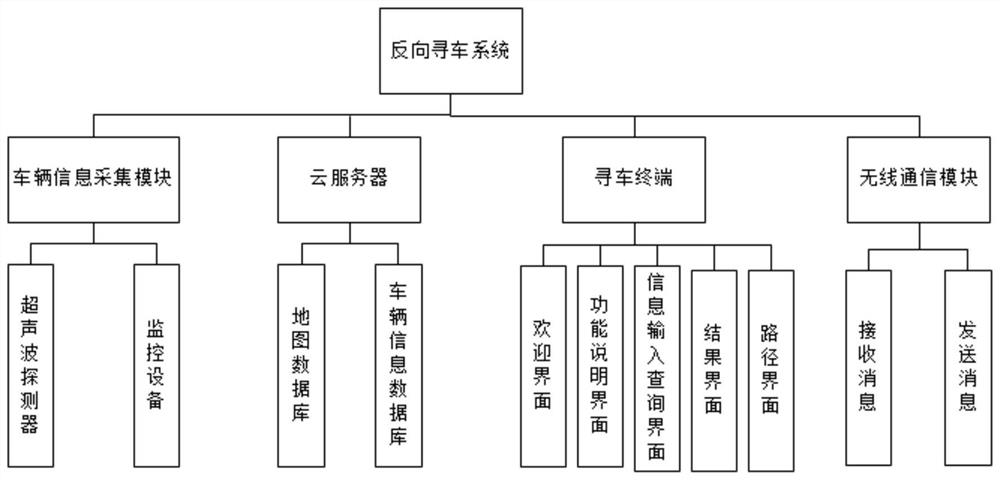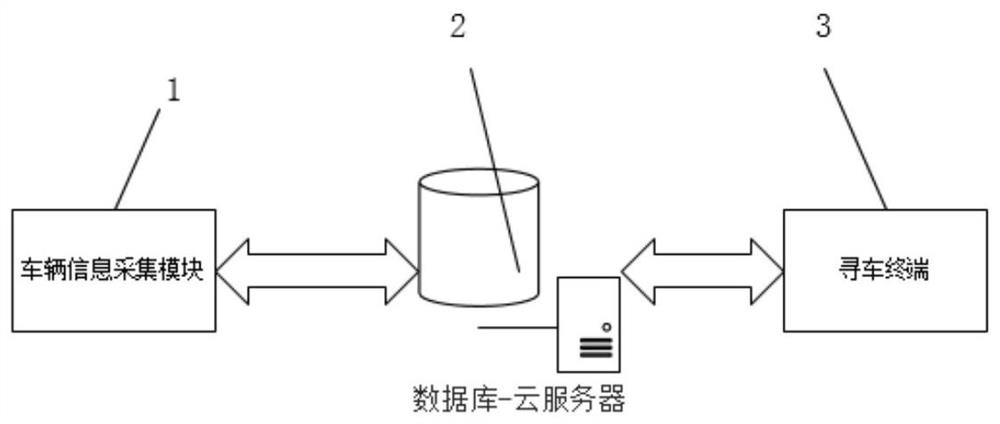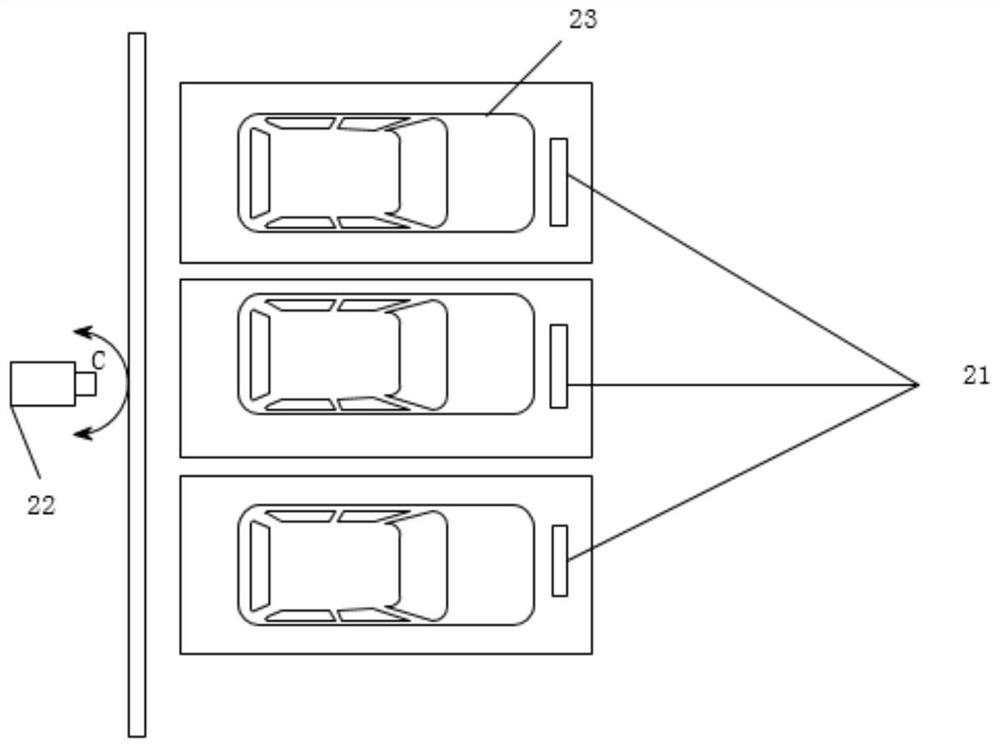A reverse car-finding system for large and medium-sized underground intelligent parking lots
A reverse car search and parking lot technology, applied in the field of parking lot vehicle management, can solve the problem of lack of car search route planning, and achieve the effect of easy promotion, simple implementation and convenient operation
- Summary
- Abstract
- Description
- Claims
- Application Information
AI Technical Summary
Problems solved by technology
Method used
Image
Examples
specific Embodiment approach 1
[0081] Specific implementation mode 1: refer to figure 1 Specifically describing this embodiment, a reverse car search system for a large and medium-sized underground intelligent parking lot described in this embodiment includes: a vehicle information collection module, a cloud server and a car search terminal,
[0082] The vehicle information collection module is used to collect the image information of the parking position of the vehicle, and upload the collected image information of the parking position of the vehicle to the cloud server,
[0083] The cloud server processes the collected image information of the parking position of the vehicle, obtains the vehicle license plate number, and associates the vehicle license plate number information with the storage time and the parking space number of the vehicle,
[0084] The car-finding terminal provides a navigation route map from the current position to the location of the target vehicle based on the vehicle license plate n...
specific Embodiment approach 2
[0202] Embodiment 2: The difference between Embodiment 2 and Embodiment 1 is that the arrangement of parking spaces in the parking lot is aimed at inclined parking spaces.
[0203] Usually, the arrangement of parking spaces in a parking lot is not limited to vertical parking spaces, and individual areas may be provided with inclined or parallel parking spaces according to the building structure. See the schematic diagram of the relevant standards for the arrangement of the vertical, inclined and parallel parking spaces. Figure 19 , Figure 20 and Figure 21 .
[0204] combine Figure 19 , Figure 20 , Figure 21 Describe the rules for the arrangement of parking spaces. For the vertical parking space, the length is greater than or equal to 5000mm, and the length is usually set to 6000mm and the width is 2500mm. Generally 2500mm×5300mm is the best standard parking space size. For the inclined parking space, the inclined length reaches 6000mm, the width is 2800mm, and th...
specific Embodiment approach 3
[0223] Embodiment 3: The difference between Embodiment 3 and Embodiment 1 and Embodiment 2 is that the arrangement of parking spaces in the parking lot is for parallel parking spaces.
[0224] For parallel parking spaces, there are only very individual areas in the garage. Due to building structure constraints and other reasons, their arrangement is set to be parallel, see Figure 23 shown.
[0225] In view of the fact that there are few parallel parking spaces arranged in the garage, in an implementation manner, the monitoring equipment and the number of monitoring parking spaces are set as one-to-one. The difference between the license plate recognition method for a parallel parking space and the specific embodiment 1 is that in the one-to-one monitoring method, only the image processing process of the intermediate parking space needs to be performed. The image processing means for the intermediate parking space adopts the processing scheme of one monitor for the vertical p...
PUM
 Login to View More
Login to View More Abstract
Description
Claims
Application Information
 Login to View More
Login to View More - R&D
- Intellectual Property
- Life Sciences
- Materials
- Tech Scout
- Unparalleled Data Quality
- Higher Quality Content
- 60% Fewer Hallucinations
Browse by: Latest US Patents, China's latest patents, Technical Efficacy Thesaurus, Application Domain, Technology Topic, Popular Technical Reports.
© 2025 PatSnap. All rights reserved.Legal|Privacy policy|Modern Slavery Act Transparency Statement|Sitemap|About US| Contact US: help@patsnap.com



